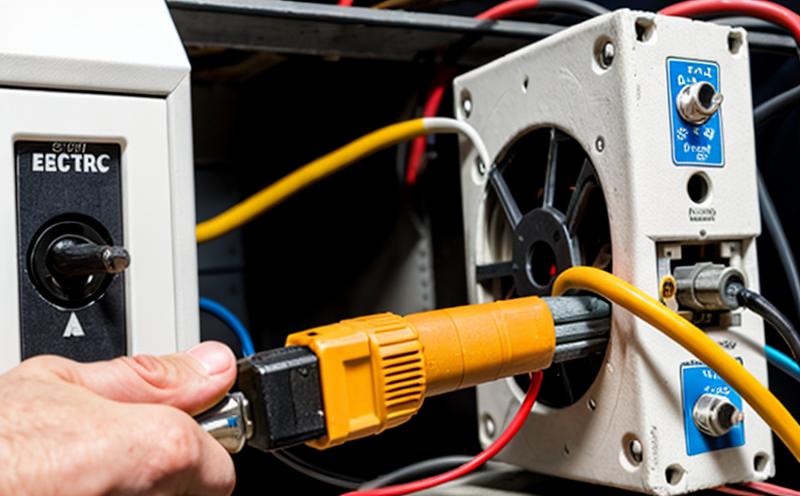EN 61000-6-1 EMC Immunity for Residential Environments
The European Standard EN 61000-6-1 specifies the immunity requirements for electrical and electronic equipment in residential environments. This standard ensures that devices and systems are capable of performing their intended functions under specified electromagnetic interference (EMI) conditions, thereby protecting them from potential disruptions due to external noise sources.
Residential environments present unique challenges when it comes to EMI because they are densely populated with various types of electronic equipment. Compliance with EN 61000-6-1 is mandatory for manufacturers aiming to place products in the European market, as non-compliance can result in significant legal and financial consequences.
The standard covers a wide range of immunity tests designed to simulate real-world scenarios encountered by residential devices. These include:
- Electrostatic discharge (ESD)
- Transient surges
- Radio frequency interference (RFI)
- Magnetic fields
- Power frequency magnetic fields
The tests are conducted in controlled laboratory conditions to replicate the types and levels of EMI that a device might encounter during its operational lifecycle. This ensures that products meet stringent quality standards before they reach the market.
The testing process involves subjecting the equipment to various stimuli to evaluate its robustness against electromagnetic interference. The tests are designed to assess the immunity of electronic devices under both static and dynamic conditions, ensuring they can withstand the environmental stresses typical in residential settings.
Compliance with EN 61000-6-1 not only enhances product quality but also contributes significantly to consumer safety by minimizing the risk of equipment malfunction or failure. This is crucial for maintaining public trust and regulatory compliance, which are vital for market entry and ongoing operations in Europe.
For manufacturers, ensuring that their products meet these rigorous standards can provide a competitive edge in the global market. By adhering to EN 61000-6-1, companies demonstrate their commitment to delivering reliable and safe products. This dedication also helps build a positive brand image, fostering customer satisfaction and loyalty.
Moreover, compliance with this standard can lead to potential cost savings in the long run by reducing the likelihood of product recalls or warranty claims. It also facilitates smoother interactions with regulatory bodies, streamlining the certification process and enhancing overall operational efficiency.
Industry Applications
| Application Area | Description |
|---|---|
| Home Appliances | Incorporating EN 61000-6-1 into the design process ensures that home appliances like refrigerators, washing machines, and dishwashers perform reliably in residential environments. |
| Battery-Powered Devices | Testing battery-powered devices for immunity to EMI is crucial given their widespread use in smart homes and connected devices. |
| Smart Home Systems | Ensuring the robustness of smart home systems against electromagnetic interference is essential for maintaining functionality and security. |
| Medical Devices | Compliance with EN 61000-6-1 helps ensure that medical devices operate safely in residential settings, minimizing the risk of malfunctions. |
| Audio and Video Equipment | Avoiding interference between audio and video equipment is critical for maintaining high-quality performance in home entertainment systems. |
| Wireless Devices | Testing wireless devices ensures they can operate reliably without being affected by external electromagnetic fields. |
Quality and Reliability Assurance
The implementation of EN 61000-6-1 into the quality assurance process involves several key steps. First, manufacturers must thoroughly understand the requirements outlined in the standard to ensure that their products are designed with immunity considerations from the outset.
During the design and development phase, engineers should incorporate shielding techniques, filtering methods, and other mitigation strategies to enhance the product’s ability to withstand EMI. This involves selecting appropriate components and materials that meet the specified performance criteria.
The testing process is equally critical. Rigorous laboratory testing under controlled conditions simulates real-world scenarios where devices might encounter electromagnetic interference. This includes using specialized equipment capable of generating various types of noise and interference, such as ESD generators, RFI sources, and magnetic field simulators.
After the initial tests are conducted, any identified issues must be addressed through design modifications or component adjustments. The process is iterative, with multiple rounds of testing to ensure that all potential vulnerabilities are mitigated effectively.
The final step in this process involves certification and documentation. Compliance reports and certificates are issued to validate that the product meets the specified immunity requirements. These documents serve as proof of conformity and can be presented during audits or market entry processes.
By following these steps, manufacturers can ensure that their products not only meet but exceed the standards set by EN 61000-6-1. This approach fosters a culture of quality assurance and reliability, which is crucial for maintaining customer satisfaction and trust in the market.
Customer Impact and Satisfaction
The impact of meeting EN 61000-6-1 requirements extends beyond compliance with regulatory standards. It directly influences the quality, reliability, and performance of residential electronic devices, thereby enhancing customer satisfaction.
Customers benefit from products that are less susceptible to electromagnetic interference, ensuring consistent performance even in densely populated environments. This reduces the likelihood of unexpected malfunctions or failures, which can be frustrating for end-users.
Furthermore, compliance with this standard reflects a manufacturer’s commitment to delivering high-quality products. This dedication is often appreciated by consumers who value reliability and durability. Positive customer feedback translates into improved brand reputation and increased market share.
Meeting these standards also helps manufacturers avoid potential issues such as product recalls or warranty claims, which can be costly and damaging to the brand’s image. By ensuring compliance upfront, companies demonstrate their proactive approach to quality management, thereby fostering long-term customer loyalty.
The overall impact of adhering to EN 61000-6-1 is a win-win situation for both manufacturers and customers. Consumers enjoy reliable products that perform as expected, while manufacturers benefit from enhanced brand reputation, reduced operational costs, and improved market competitiveness.





